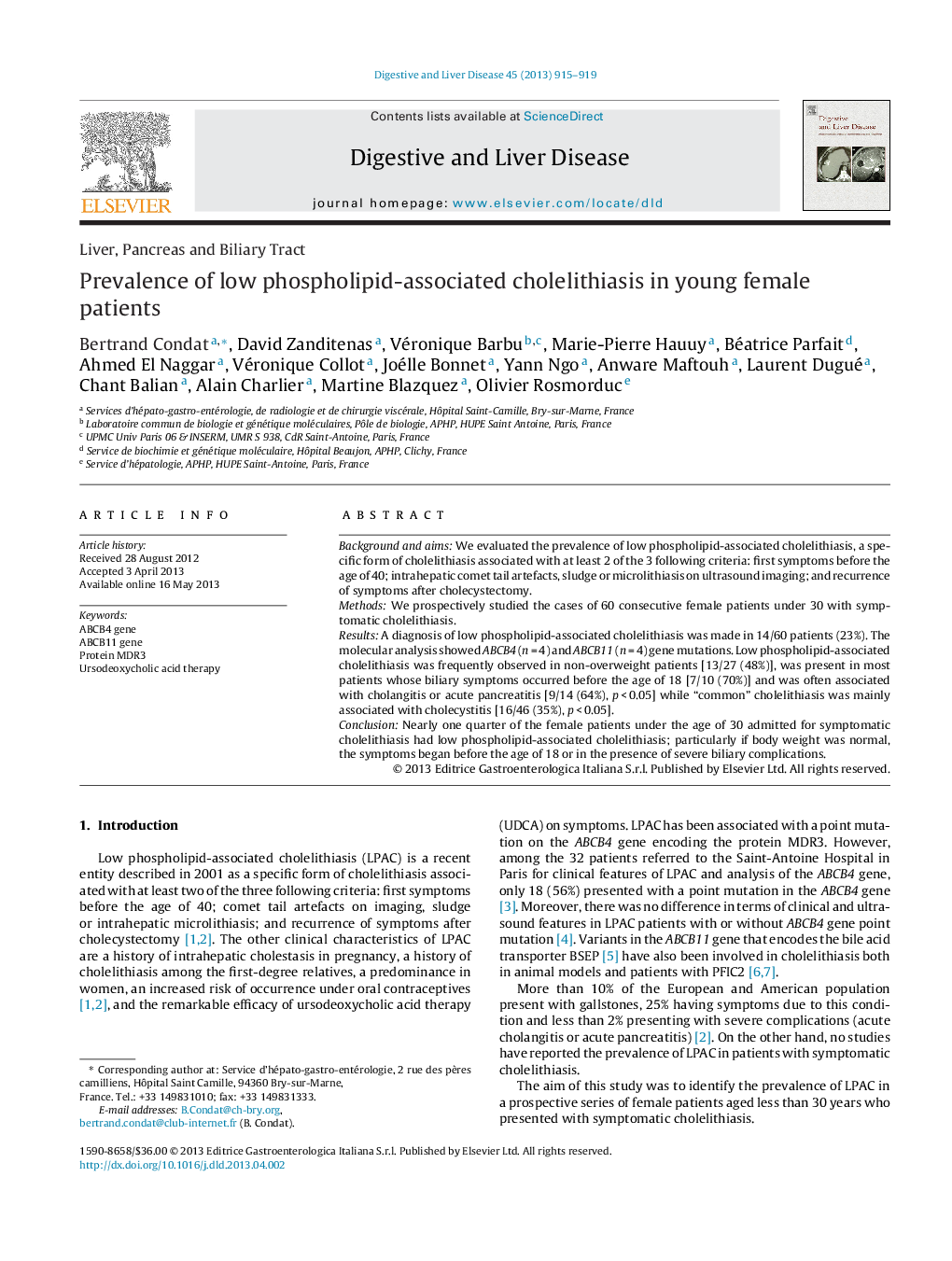| Article ID | Journal | Published Year | Pages | File Type |
|---|---|---|---|---|
| 6088676 | Digestive and Liver Disease | 2013 | 5 Pages |
Background and aimsWe evaluated the prevalence of low phospholipid-associated cholelithiasis, a specific form of cholelithiasis associated with at least 2 of the 3 following criteria: first symptoms before the age of 40; intrahepatic comet tail artefacts, sludge or microlithiasis on ultrasound imaging; and recurrence of symptoms after cholecystectomy.MethodsWe prospectively studied the cases of 60 consecutive female patients under 30 with symptomatic cholelithiasis.ResultsA diagnosis of low phospholipid-associated cholelithiasis was made in 14/60 patients (23%). The molecular analysis showed ABCB4 (n = 4) and ABCB11 (n = 4) gene mutations. Low phospholipid-associated cholelithiasis was frequently observed in non-overweight patients [13/27 (48%)], was present in most patients whose biliary symptoms occurred before the age of 18 [7/10 (70%)] and was often associated with cholangitis or acute pancreatitis [9/14 (64%), p < 0.05] while “common” cholelithiasis was mainly associated with cholecystitis [16/46 (35%), p < 0.05].ConclusionNearly one quarter of the female patients under the age of 30 admitted for symptomatic cholelithiasis had low phospholipid-associated cholelithiasis; particularly if body weight was normal, the symptoms began before the age of 18 or in the presence of severe biliary complications.
